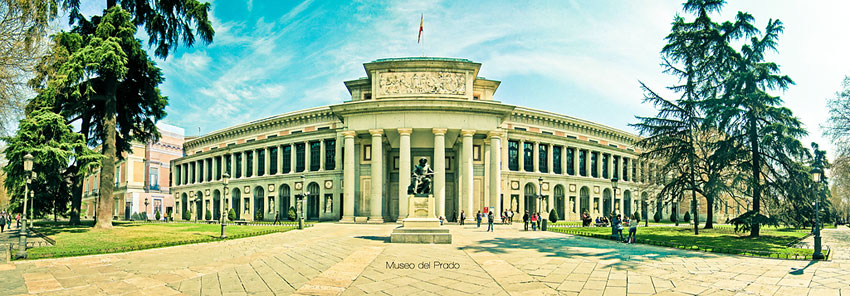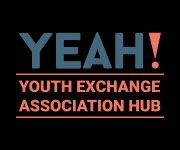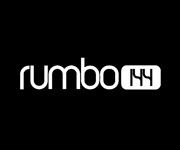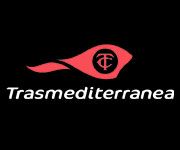SALAMANCA - MADRID - TOLEDO
A four day trip to discover the capitals of Spaina and the city withe the oldest university in the world.
Day one: Salamanca
We'll travel through the night to arrive at Salamanca in the morning.
During the day we'll have a guided visit through the centre of Salamanca, a World Heritage city with the oldest university in Spain and the first in Europe to hold the title of University. We'll see the old and new Cathedrals, Casa de las Conchas, look for the frog at the University (tradition says that those who find it will have good luck in their exams ...)
In the evening we'll party in Salamanca which is spectacular. We'll start the night in the Chupiteria and after we'll go dancing till you drop (there is an after party in the main square ... if anyone is still up for it?) where we'll party with the Erasmus Salamanca.

The history of Salamanca and its graduates make for a really fun and interesting contrast. This is where the inexorable cynical Hernan Cortes studied, and later became the conqueror of Mexico, and a little later, Francisco de Vitoria who first defended the Indians and marked the beginning of international law. Also the founder of the Jesuit order, Ignatius of Loyola, was studying science here and paradoxically his theology professor was the philosopher and poet Fray Luis de Leon (who was very "unfaithful" for the church). In these walls Antonio de Nebrija, a professor of rhetoric and author of the first Spanish grammar book in the world, had a professorship at the university, and won the highest blessing for the publication of his work with ease, even though Queen Isabel of Castile asked: "what a strange work this professor has written?" He answered: "The language always accompanies the Empire, Your Majesty." The insightful Queen certainly appreciated the irony, but pretended not to understand.

Day two: Madrid
Thursday morning we'll go to Madrid and the hostel is in the centre, next to the Puerta del Sol. In the afternoon we'll have a guided visit to see the city. We'll see the most emblematic places in the capital of Spain such as the Plaza Mayor the Almudena Cathedral, and the Royal Palace.
In the evening of course we'll party and we'll go to the famous Discoteca Kapital in the centre of Madrid with seven different floors!

Interesting dates in Madrid:
- Madrid has been the capital of Spain since 1561.
- The first inhabitants of Madrid were Arabic and called the city Magritte
- The Plaza Mayor was once a place for public executions of those who conducted the Inquisition
- It was also the square when they would have the running of the bulls but only for the King
- The Caje Madrid tower is the tallest building in Spain with 45 floors making it 250 metres high. It took four years to build between 2004 and 2008.
- The streets in Madrid are the greenest in Europe
- Madrid is the sunniest city in Europe, there are around 250 sunny days each year
- Each year the capital of Spain receives more than 6 million tourists
- Officially, Madrid is the home to 96 thousand foreigners
- The local football team Real Madrid has been recognised and the best club of the 20th century. In 1920 it was awarded a royal title. Their stadium 'Santiago Bernabeu' is one of the largest in Spain with a capacity for more than 85,000 spectators.
- Madrid is the 'highest capital' in Europe and is 650 metres above sea level.
- In the Puerta del Sol, there is a monument of the city, a bear on his hind legs reaching the strawberry tree for one of the red fruits.




Day three: Madrid
On Saturday we'll have a busy day visiting the main tourist attractions, Parque de Retiro, visitar Museo Thyssen, Museo de Prado and Museo Reina Sofía.
Those who are interestde can visit the Real Madrid footbal stadium which is called Santiago Bernabeu.
In the evening we can have tapas in Madrid and party!


Day four: Toledo and back to Valencia
On Sunday we'll leave Madrid and make our way back to Valencia but will stop to eat and spend some time visiting the medieval city of Toledo which was the capital of Spain before Madrid. You'll like you're in a different era in the streets! We'll visit the Museo del Greco, Museo Sefardí (Sinagoga del Tránsito), Museo de Los Concilios y La Cultura Visigoda, Termas Romanas de Amador de los Ríos, el Alcázar-Museo del Ejército.

We'll go to a panoramic viewpoint of the city and its stunning position on the cliffs of the river Tagus.

Toledo is famous for its forges (iron crafts). You will find many shops on the streets selling souvenirs like swords and guns, knights armour, jewelry for women, cooking knives and hunting tools.
Any object that can be forged iron can be purchased in Toledo and you can be sure it's of the highest quality. Today there are many forges still operating and we'll be able to visit one where they'll explain how the jewels are made using the method called Damascene.
Damascene is a craft work that entails making figures and drawings come to life by embeddding wires or sheets of gold and silver steel or iron. The name is a reference to the city of Damasco. In Toledo it has become an important industry and is known as the Oro de Toledo (gold of Toldeo). It is a symbol of the city. The production is become less handcrafted and more industrialised given the amount that is traded. The damascene industry has joined the arms industry and this art supplies all souvenir shops in Spain. There are still artisans who make things of the highest quality that are handcrafted.
The most appreciated souvenirs of Toledo are those for women such as the pendants or earrings or bracelets made in Damascene (there are some cheaper factory made ones or the more expensive hand made ones). And the men often but some knives or keyrings made of iron and they are usually made with bull horn too.
Do you know who is the most faithful client to the forges of Toledo? Hollywood! Yes, it's the factory of dreams where the produces props for films. For example, in Toledo they forged many swords used by hobbits and other characters in the blockbuster 'The Lord of the Rings'.
We'll arrive back in Valencia in the evening.

A four day trip to discover the capitals of Spaina and the city withe the oldest university in the world.
Day one: Salamanca
We'll travel through the night to arrive at Salamanca in the morning.
During the day we'll have a guided visit through the centre of Salamanca, a World Heritage city with the oldest university in Spain and the first in Europe to hold the title of University. We'll see the old and new Cathedrals, Casa de las Conchas, look for the frog at the University (tradition says that those who find it will have good luck in their exams ...)
In the evening we'll party in Salamanca which is spectacular. We'll start the night in the Chupiteria and after we'll go dancing till you drop (there is an after party in the main square ... if anyone is still up for it?) where we'll party with the Erasmus Salamanca.

The history of Salamanca and its graduates make for a really fun and interesting contrast. This is where the inexorable cynical Hernan Cortes studied, and later became the conqueror of Mexico, and a little later, Francisco de Vitoria who first defended the Indians and marked the beginning of international law. Also the founder of the Jesuit order, Ignatius of Loyola, was studying science here and paradoxically his theology professor was the philosopher and poet Fray Luis de Leon (who was very "unfaithful" for the church). In these walls Antonio de Nebrija, a professor of rhetoric and author of the first Spanish grammar book in the world, had a professorship at the university, and won the highest blessing for the publication of his work with ease, even though Queen Isabel of Castile asked: "what a strange work this professor has written?" He answered: "The language always accompanies the Empire, Your Majesty." The insightful Queen certainly appreciated the irony, but pretended not to understand.

Day two: Madrid
Thursday morning we'll go to Madrid and the hostel is in the centre, next to the Puerta del Sol. In the afternoon we'll have a guided visit to see the city. We'll see the most emblematic places in the capital of Spain such as the Plaza Mayor the Almudena Cathedral, and the Royal Palace.
In the evening of course we'll party and we'll go to the famous Discoteca Kapital in the centre of Madrid with seven different floors!

Interesting dates in Madrid:
- Madrid has been the capital of Spain since 1561.
- The first inhabitants of Madrid were Arabic and called the city Magritte
- The Plaza Mayor was once a place for public executions of those who conducted the Inquisition
- It was also the square when they would have the running of the bulls but only for the King
- The Caje Madrid tower is the tallest building in Spain with 45 floors making it 250 metres high. It took four years to build between 2004 and 2008.
- The streets in Madrid are the greenest in Europe
- Madrid is the sunniest city in Europe, there are around 250 sunny days each year
- Each year the capital of Spain receives more than 6 million tourists
- Officially, Madrid is the home to 96 thousand foreigners
- The local football team Real Madrid has been recognised and the best club of the 20th century. In 1920 it was awarded a royal title. Their stadium 'Santiago Bernabeu' is one of the largest in Spain with a capacity for more than 85,000 spectators.
- Madrid is the 'highest capital' in Europe and is 650 metres above sea level.
- In the Puerta del Sol, there is a monument of the city, a bear on his hind legs reaching the strawberry tree for one of the red fruits.




Day three: Madrid
On Saturday we'll have a busy day visiting the main tourist attractions, Parque de Retiro, visitar Museo Thyssen, Museo de Prado and Museo Reina Sofía.
Those who are interestde can visit the Real Madrid footbal stadium which is called Santiago Bernabeu.
In the evening we can have tapas in Madrid and party!


Day four: Toledo and back to Valencia
On Sunday we'll leave Madrid and make our way back to Valencia but will stop to eat and spend some time visiting the medieval city of Toledo which was the capital of Spain before Madrid. You'll like you're in a different era in the streets! We'll visit the Museo del Greco, Museo Sefardí (Sinagoga del Tránsito), Museo de Los Concilios y La Cultura Visigoda, Termas Romanas de Amador de los Ríos, el Alcázar-Museo del Ejército.

We'll go to a panoramic viewpoint of the city and its stunning position on the cliffs of the river Tagus.

Toledo is famous for its forges (iron crafts). You will find many shops on the streets selling souvenirs like swords and guns, knights armour, jewelry for women, cooking knives and hunting tools.
Any object that can be forged iron can be purchased in Toledo and you can be sure it's of the highest quality. Today there are many forges still operating and we'll be able to visit one where they'll explain how the jewels are made using the method called Damascene.
Damascene is a craft work that entails making figures and drawings come to life by embeddding wires or sheets of gold and silver steel or iron. The name is a reference to the city of Damasco. In Toledo it has become an important industry and is known as the Oro de Toledo (gold of Toldeo). It is a symbol of the city. The production is become less handcrafted and more industrialised given the amount that is traded. The damascene industry has joined the arms industry and this art supplies all souvenir shops in Spain. There are still artisans who make things of the highest quality that are handcrafted.
The most appreciated souvenirs of Toledo are those for women such as the pendants or earrings or bracelets made in Damascene (there are some cheaper factory made ones or the more expensive hand made ones). And the men often but some knives or keyrings made of iron and they are usually made with bull horn too.
Do you know who is the most faithful client to the forges of Toledo? Hollywood! Yes, it's the factory of dreams where the produces props for films. For example, in Toledo they forged many swords used by hobbits and other characters in the blockbuster 'The Lord of the Rings'.
We'll arrive back in Valencia in the evening.





















































